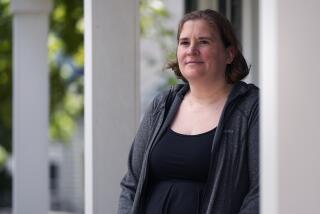At SEC forum, experts clash over high-speed trading’s role in ‘flash crash’
Federal regulators still haven’t been able to pinpoint the cause of Wall Street’s so-called flash crash a month ago, but more than two dozen experts Wednesday told the Securities and Exchange Commission what might work to prevent a repeat — and what won’t work.
SEC Chairwoman Mary L. Schapiro said the agency was “making progress” in its ongoing review of the market turmoil of May 6, when the Dow Jones industrial average plummeted 700 points in just 15 minutes.
Schapiro last month proposed changes to stem future nose dives, most notably a temporary plan for a circuit-breaker mechanism that would halt trading for five minutes in all shares of companies in the Standard & Poor’s 500 index should any single stock price change at least 10% during a five-minute period.
The New York Stock Exchange has circuit breakers that halt all trading based on swings in the Dow itself, not individual stocks, but last month’s market plunge was not deep enough to trigger those protections.
Panelists at the SEC’s daylong forum on financial market structure issues generally agreed that Schapiro’s circuit-breaker proposal would help stop a similar plunge from getting out of control.
“We think it is important to require a timeout to let investors become calm in times of stress,” said Gus Sauter, chief investment officer at Vanguard Group.
The proposal is expected to be approved soon by the full commission and would take effect June 14. It would remain in effect until Dec. 10, when the SEC would make adjustments and potentially expand it to other stocks.
But several participants warned that super-fast, computerized high-frequency trading and the increasing number of electronic exchanges still threaten to undermine market stability.
Though there was a consensus that technological advances, including computerized trading, have benefited investors by lowering transaction costs, panelists clashed on the value of high-frequency trading and its role in last month’s market plunge.
“The clear culprit was the commitment to high speed, whether it made sense or not,” said Richard Rosenblatt, chief executive of Rosenblatt Securities, who has been a trader for 40 years.
He said the May 6 crash “was embarrassing, it shook confidence in our markets, and it was avoidable.”
Michael Goldstein, a finance professor at Babson College, said stock trades were now taking place in microseconds.
“There is speed that’s too fast and right now we’re at it,” he said. “Like our highways have a minimum speed and maximum speed, maybe it’s time for our highways in trading to have a minimum speed and a maximum speed as well.”
But executives for two high-frequency-trading firms — Getco and RGM Advisors — warned that limiting speed and technology would stifle innovation. They said fast, automated trading has helped lower the range between selling and buying bids in the markets, helping investors get more accurate prices.
And Terrence Hendershott, an expert on market technology at the Haas School of Business at UC Berkeley, said there was no evidence that high-frequency traders “do anything bad.”
Wednesday’s forum was scheduled two months ago as the SEC had been soliciting public comment since January on ways to improve the structure of financial markets. The May 6 market plunge added urgency to those efforts.
Sen. Ted Kaufman (D-Del.) and SEC Commissioner Luis A. Aguilar, a Democrat, criticized the panel as being dominated by representatives of the financial services industry.
“The American public need to be assured that the foxes are not the primary consultants in how to build the henhouse,” said Aguilar, who urged the SEC staff to seek out more diverse input, including from those representing retail investors.
More to Read
Inside the business of entertainment
The Wide Shot brings you news, analysis and insights on everything from streaming wars to production — and what it all means for the future.
You may occasionally receive promotional content from the Los Angeles Times.










